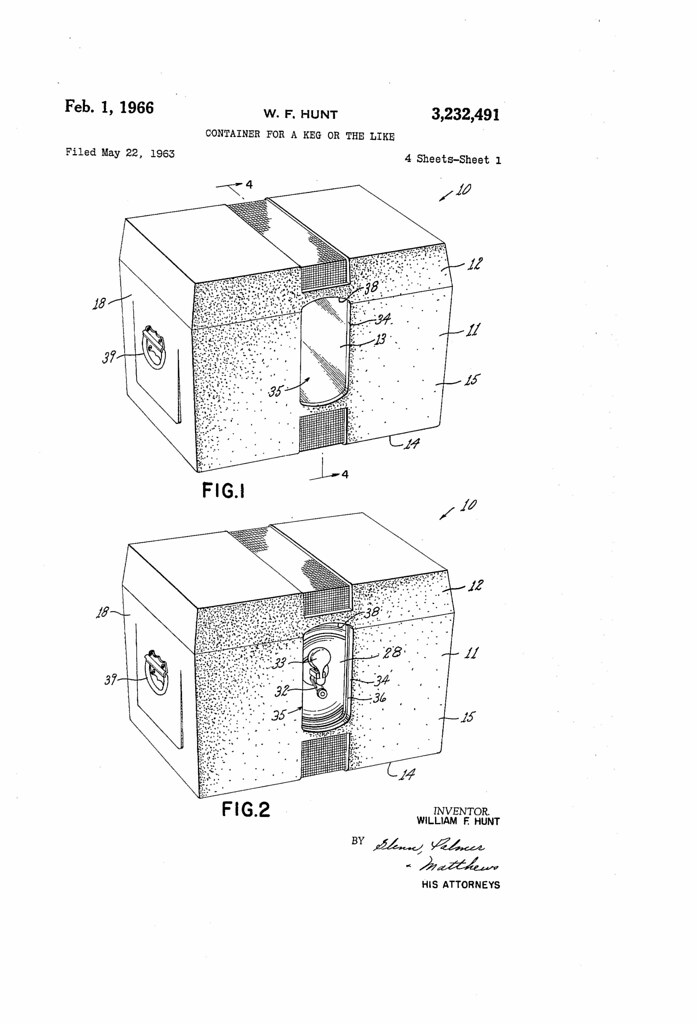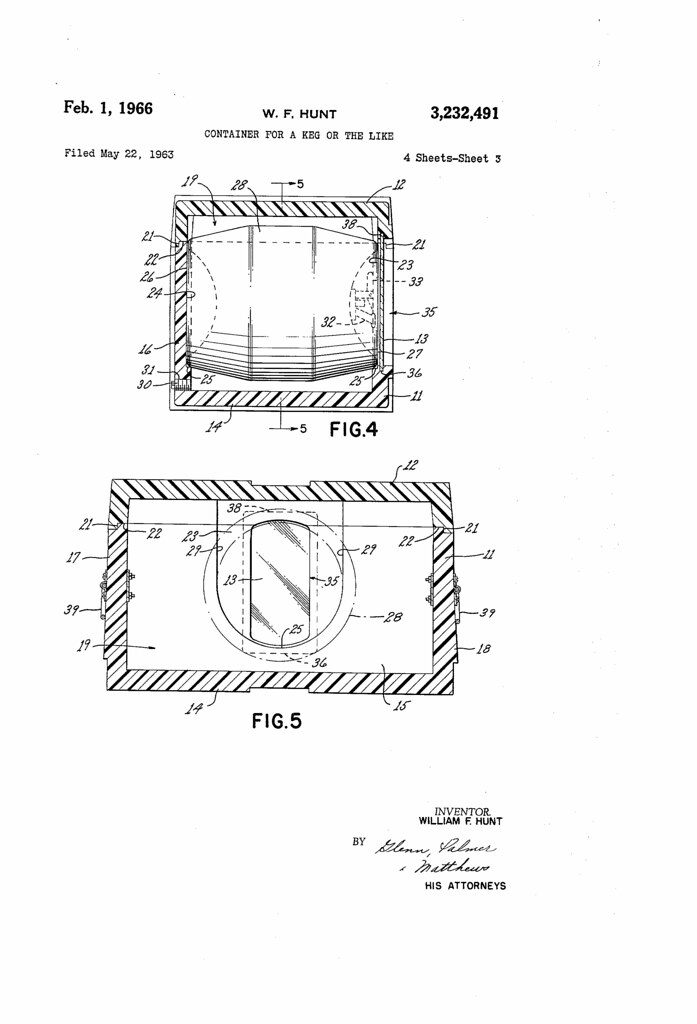
Today in 1966, US Patent 3232491 A was issued, an invention of William F. Hunt, assigned to Reynolds Metals Co., for his “Container for a Keg or the Like.” There’s no Abstract, and although the drawings suggest the invention is a jockey box-like container for kegs, at one point he mentions “beer is now being sold in barrel-shaped kegs formed of metallic material, such as aluminum containing metallic material or the like, having a capacity of around 2 to 2 1/2 gallons,” adding that this phenomena is growing in popularity and “that people are more frequently buying beer and other beverages in larger and more economical containers not only for home use but also for picnics and the like.” Now admittedly I was only seven in 1966, so wasn’t buying too many kegs at the time, but I certainly don’t remember these 2 to 2-1/2 gallon kegs of which he speaks. I do remember 5L mini kegs made primarily by German brewers in the mid-1990s, but that would have been just over 1.3 gallons. So despite its appearance, this keg box would have been much smaller than it looks, being designed for a much smaller keg, though it’s described as “an improved container is provided for receiving such a keg or the like wherein the container supports the keg in a novel manner to permit the same to be completely surrounded by ice or other cooling medium so that the keg will be refrigerated and the beverage remain cool until the same is dispensed from the keg.”




Falstaff and a few other brewers (I think Baltimore’s National and Hamm’s were some of the others) were selling beer in so-called “Tapper” aluminum kegs manufactured by Reynolds, which owned the name and usually co-sponsored the ads.
Most were 2.25 gallons (so, equivalent to a case of 12 oz. bottles) but in some markets they were “Eighths” – 3 7/8 gallons.
(I can send you some B&W newspaper ads).